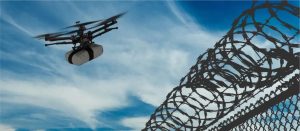 In the realm of perimeter security, the adoption of drone technology has emerged as a transformative solution, offering organizations a modern approach to safeguarding their assets. Drones bring forth a suite of advantages that traditional security measures often lack, yet they also introduce a unique set of challenges that must be carefully navigated. As the integration of drones into security strategies becomes increasingly prevalent, understanding both the opportunities and potential drawbacks is crucial for organizations aiming to bolster their security frameworks.
In the realm of perimeter security, the adoption of drone technology has emerged as a transformative solution, offering organizations a modern approach to safeguarding their assets. Drones bring forth a suite of advantages that traditional security measures often lack, yet they also introduce a unique set of challenges that must be carefully navigated. As the integration of drones into security strategies becomes increasingly prevalent, understanding both the opportunities and potential drawbacks is crucial for organizations aiming to bolster their security frameworks.
Advantages of Drones in Perimeter Security
One of the most compelling benefits of employing drones for perimeter security is their enhanced surveillance capabilities. Drones can cover vast and often inaccessible areas quickly, making them particularly effective for monitoring complex terrains such as industrial sites, border regions, and large-scale infrastructure. Their ability to be deployed rapidly ensures that organizations can respond swiftly to emerging threats, allowing for timely intervention in potential security breaches.
Moreover, the cost-efficiency of drones is significant when compared to traditional security methods, which often rely on extensive manpower and fixed surveillance systems. By leveraging drone technology, organizations can reduce ongoing labor costs while maintaining a robust security presence. Advanced features such as integrated analytics and AI capabilities further augment this efficiency by enabling real-time threat detection and assessment, minimizing the likelihood of human error.
Drones also offer a dynamic perspective in surveillance operations, providing aerial views that fixed cameras cannot. This adaptability allows security teams to adjust their monitoring strategies based on specific operational needs and threat landscapes. For instance, drones equipped with thermal imaging technology can detect intrusions during low visibility conditions, adding another layer of protection.
Challenges and Limitations of Drone Technology
Despite the myriad advantages, the deployment of drones for perimeter security is not without its challenges. One of the primary limitations is battery life; most drones can only operate for a limited duration before requiring a recharge or battery swap. This constraint can hinder continuous surveillance efforts, particularly in large areas where multiple drones may be necessary to maintain coverage.
Furthermore, drones are susceptible to environmental factors such as extreme weather conditions, which can impair their functionality and reliability. High winds, rain, or snow can significantly limit a drone’s operational capabilities, making it imperative for organizations to consider weather conditions when planning surveillance activities.
Privacy concerns also loom large when deploying drones for security purposes. Continuous aerial monitoring raises ethical questions, especially when drones are used in proximity to residential areas. Organizations must navigate complex regulatory environments that govern privacy and surveillance to ensure compliance and maintain public trust.
Cybersecurity risks are another critical factor to consider. Drones are vulnerable to hacking and unauthorized access, which can lead to data breaches and compromise sensitive information. Implementing robust cybersecurity measures is essential to mitigate these risks and safeguard operational integrity.
Balancing the Benefits and Challenges
 To harness the full potential of drone technology while addressing its inherent challenges, organizations must adopt a balanced approach. This includes integrating drones with existing security systems, such as fixed surveillance cameras and ground patrols, to create a comprehensive security solution. Hybrid systems can enhance overall effectiveness while providing redundancy and minimizing the impact of any single point of failure.
To harness the full potential of drone technology while addressing its inherent challenges, organizations must adopt a balanced approach. This includes integrating drones with existing security systems, such as fixed surveillance cameras and ground patrols, to create a comprehensive security solution. Hybrid systems can enhance overall effectiveness while providing redundancy and minimizing the impact of any single point of failure.
Training and educating personnel on the operation and maintenance of drone technology is equally important. Ensuring that security teams are well-versed in drone operations can maximize their effectiveness and minimize operational risks.
Lastly, organizations must establish clear policies regarding data privacy and drone usage. Transparent communication with stakeholders and the public about how drones will be utilized and the measures in place to protect privacy can help mitigate concerns and foster trust.
Conclusion
As drone technology continues to evolve, its role in perimeter security will only grow in significance. By understanding the advantages and challenges associated with drone deployment, organizations can make informed decisions that enhance their security posture while respecting ethical and regulatory considerations. Embracing a strategic, well-rounded approach will empower organizations to leverage the full potential of drones, turning them into a vital asset in the quest for improved security.























































